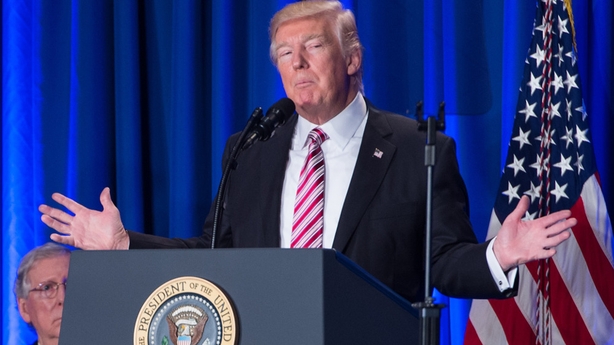US economic growth slowed more than expected in the fourth quarter as a plunge in shipments of soybeans weighed on exports.
But steady consumer spending and rising business investment suggested the US economy would continue to expand.
US gross domestic product increased at a 1.9% annual rate, the Commerce Department said today in its first estimate of fourth quarter GDP.
That was a sharp deceleration from the 3.5% growth pace logged in the third quarter.
As a result, the economy grew only 1.6% in 2016, the weakest pace since 2011.
Growth in the first half of the year was curbed by cheap oil and a strong dollar, which undercut company profits and weighed on business investment. An inventory correction also hurt growth last year.
The US economy had expanded by 2.6% in 2015.
In the fourth quarter, exports fell at a 4.3% rate, reversing the 10% increase seen in the third quarter. The fourth-quarter drop in exports was the biggest since the first quarter of 2015.
Trade sliced off 1.70 percentage points from GDP growth in the fourth quarter after adding 0.85 percentage point in the prior period. That was the biggest drag since the second quarter of 2010.
Most of the hit came from soybean exports, which fired up GDP growth in the third quarter after a poor soy harvest in Argentina and Brazil.
Economists polled by Reuters had forecast GDP rising at a 2.2% rate in the fourth quarter.
With a labour market at or near full employment starting to lift wages and supporting consumer spending, the outlook for the economy is bright.

Growth this year could also get a boost from President Donald Trump's pledge to increase infrastructure spending, cut taxes and reduce regulations.
Although Trump has offered little detail on his economic policy, his promises have been embraced by consumers, businesses and investors.
US consumer and business confidence have soared, while the US stock market has rallied to record highs.
But uncertainty over the Trump administration's trade policy poses a risk to the economy.
A stronger economy would also mean further interest rate increases from the Federal Reserve. The Fed has forecast three rate hikes this year. It raised its benchmark overnight interest rate in December by 25 basis points to a range of 0.5-0.75%.
Consumer spending, which accounts for more than two-thirds of US economic activity, increased at a 2.5% rate in the fourth quarter. It rose at a 3% pace in the third quarter.
With domestic demand increasing steadily, businesses continued to restock.
They accumulated inventories at a rate of $48.7 billion in the last quarter, up from $7.1 billion in the third quarter. Inventories added 1.0 percentage point to GDP growth, double the contribution in the third quarter.
US business investment shifted into higher gear, with spending on equipment increasing at a 3.1% rate after four quarterly declines in a row. The gain reflects a surge in gas and oil well drilling, in tandem with rising crude oil prices.
Spending on mining exploration, wells and shafts increased at a 24.3% rate after declining at a 30% pace in the third quarter.
Energy services firm Baker Hughes said last Friday that US energy companies added 29 oil rigs in the week to Jan. 20, bringing the total count to 551 - the most since November 2015.

